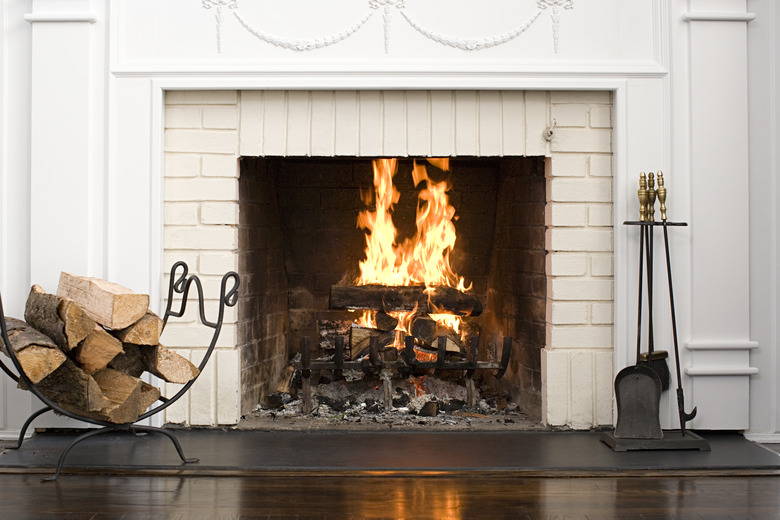How Do I Cool Down Fireplace Logs That Are Burning Too Hot?
We may receive a commission on purchases made from links.
There's nothing quite as cozy as curling up in front of the fireplace on a cold winter day. When cozy turns to sleepy, however, you may find yourself wanting to go to bed before your fireplace logs cool. You may also find yourself flying through firewood that is simply burning too hot and too quickly. In either case, you'll want to know how to cool things down as quickly as possible.
Tip
Cooling hot fireplace logs takes a little time. To speed the process, spread out your logs and embers, smother hot ashes with cooler ones, and reduce the airflow to the fireplace or wood stove if possible.
The Combustion Process
The Combustion Process
To understand how to cool a fire quickly, you must first understand the combustion process. Fire needs three things in order to burn. Deprive it of any one of them and the fire goes out. These three things are fuel, oxygen, and heat.
To deprive the fire of the fuel it needs will cool things down, but this is an impractical approach when you're in a hurry. You certainly can't just pick up burning logs and deposit them somewhere else. As such, extinguishing or slowing a fire by depriving it of fuel only works when you have time to plan ahead, leaving plenty of time for the fire to burn itself out after you stop feeding it.
Heat is another important part of the combustion process. You can easily see the heat process at work if you put a fresh log atop a pile of red-hot embers. If they're hot enough, the embers will ignite the log. The quickest way to cool a fire is to douse it with water, but this isn't recommended. Instead, spread out the logs and embers in your fireplace as far as you can so they cool more quickly.
Oxygen is the third combustion requirement and potentially the easiest one to control. Stove vents and vented fireplace doors give you lots of control over how much oxygen a fire gets. You can quickly smother an outdoor fire with dirt and an indoor one with a fire blanket if necessary.
Cooling a Wood Stove
Cooling a Wood Stove
Wood stoves give you quite a bit of control over the combustion process, but cooling or extinguishing the fire within still takes a little time. The fastest route to a cooler fire is undeniably dousing it with water, but you never want to do that unless the fire is out of control, and you have no choice. Pouring water onto a stove fire creates massive smoke billows and a pastelike ash that is difficult to remove.
- Open the stove door and spread out the embers and logs with a fireplace poker.
- Dampen the logs and embers with water if you're in a hurry. Apply the water sparingly, sprinkling the water by hand rather than pouring on a lot of water at once.
- Mix a 50/50 baking soda and water solution and spray it over your wood and embers to help keep them from reigniting.
- Close the stove door all the way and then adjust the air vents. Watch the flame as you do so. If you want to put out the fire completely,
close the vents altogether. If you are trying to cool the stove without extinguishing it, turn the air vents until the flames become small but stay lit.
Fireplaces and Fire Pits
Fireplaces and Fire Pits
Cooling and extinguishing fires in fireplaces and outdoor fire pits require a slightly different strategy than cooling wood stoves. Note, however, that dousing the fire with water is an even bigger mistake in a brick or stone fireplace. When cool water comes into contact with hot bricks or stones, it can crack them.
- Spread the logs and embers in the fireplace or pit with a poker.
- Cover the hot embers with ashes when they start to form. Hot embers will start to turn into ash as your fire cools, and you can use these ashes to smother the fire and deprive it of oxygen. If you're only looking to cool the fire rather than put it out, cover only a few areas with ash to try to reduce the heat without losing it altogether.
- If you have a fireplace cover, close the bifold doors and then adjust the air vents. The further you close them, the smaller and less intense your fire will be.
- Sprinkle the fire with baking soda. If you're still concerned that the fire isn't completely out, you can also shovel some dirt on top of it. This plan is effective in outdoor fire pits, but you may need to shovel the dirt back out to use the fire pit later.
